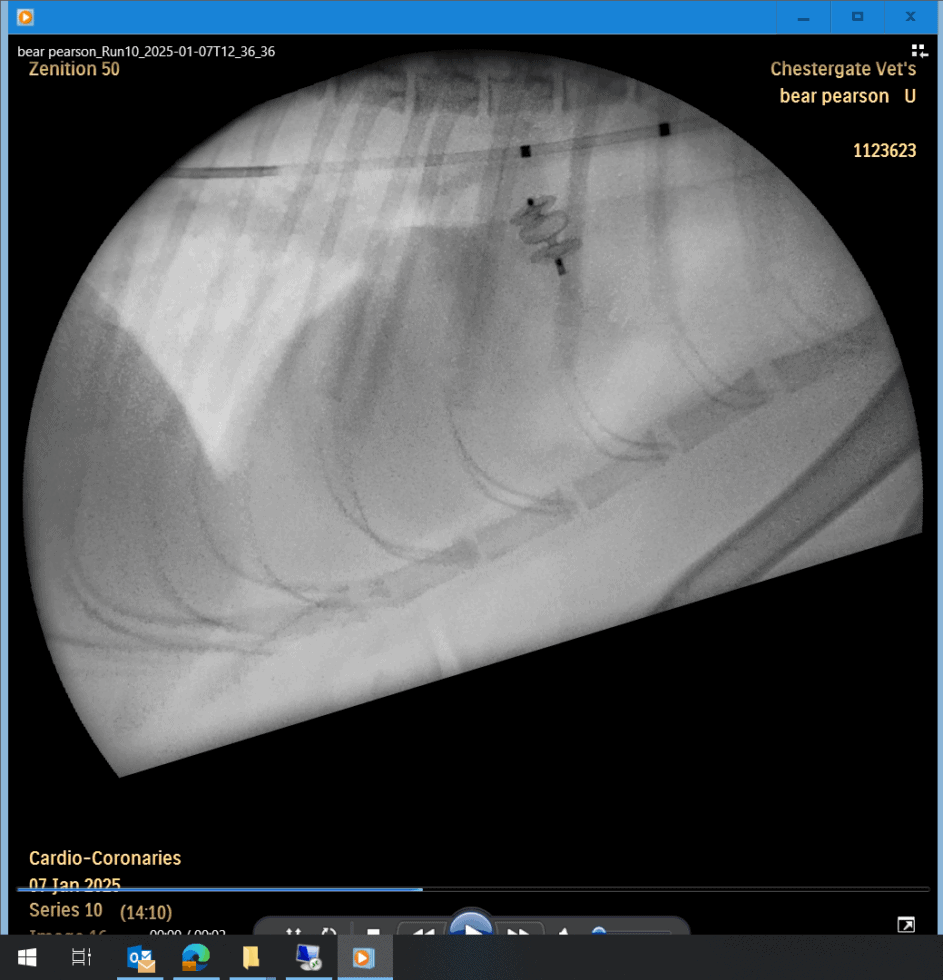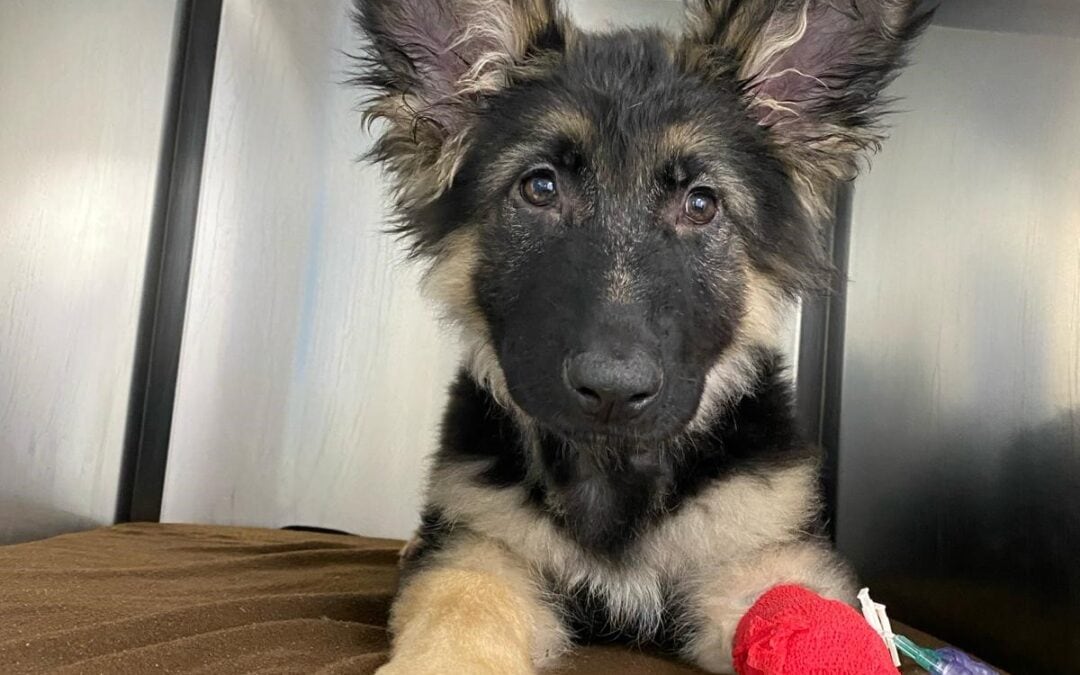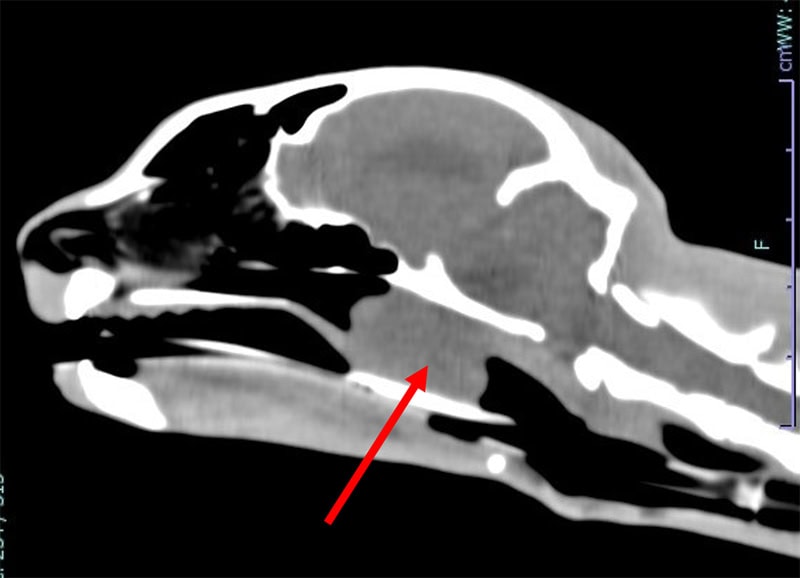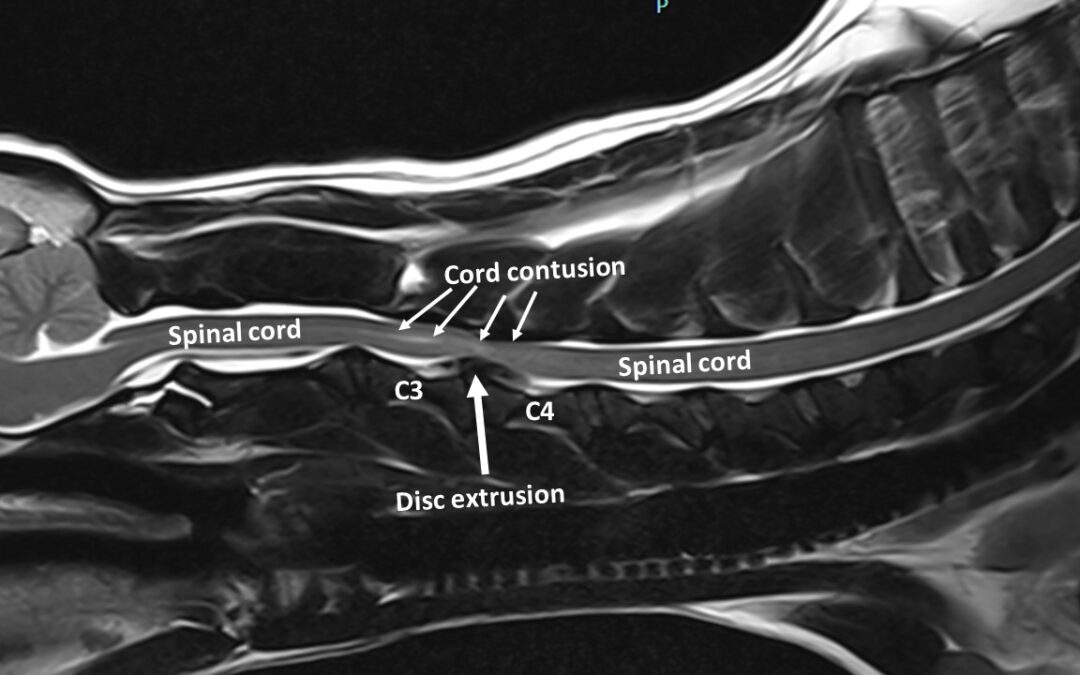Recently, our Cardiology Specialists, Liz Bode and Mattia Basili, were faced with an unusual challenge. Bear, a beautiful domestic shorthaired cat had been diagnosed with a patent ductus arteriosus (PDA), which was causing his heart to be enlarged and putting him at risk of developing heart failure.
A patent ductus arteriosus (PDA) is a heart condition where the ductus arteriosus, a blood vessel in the foetus that allows blood to bypass the lungs, doesn’t close properly after birth. Normally, this vessel closes soon after birth as the kitten begins to breathe on its own, but if it stays open (patent), it can cause abnormal blood flow between the aorta and pulmonary artery and eventually lead to heart failure.
Diagnosis is usually made through auscultation (listening for heart murmurs), followed by echocardiography or other imaging techniques to confirm the condition. The most common treatment for PDA in cats is open chest surgery, where a surgeon ties off the patent vessel. The cat would then be hospitalised for 2-3 days with strict rest at home to allow their surgical site to heal. However, small animals (as little as 1kg in weight) can now have a minimally invasive procedure to close the PDA. This means that recovery is much quicker and is associated with significantly less pain and discomfort.

Bear was evaluated by our Cardiologists and was deemed suitable for closure of his PDA using an AVP II. Bear was anesthetised by our dedicated anaesthesia service, and his jugular vein catheterised. The procedure was performed though this catheter and the AVP II was successfully deployed within his PDA, closing it off. The catheter was removed and he was left with a 2mm wound on his neck. Bear was discharged home to his loving family within 24 hours.
We are delighted to be able to offer minimally invasive procedures to close PDAs in all sizes of animals.




